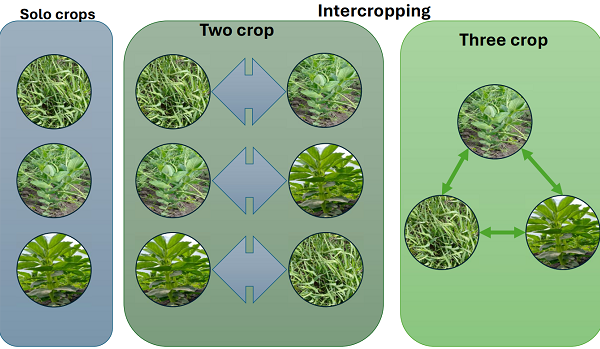Scientific Objectives in Intercropping Studies
Intercropping systems are highly productive but difficult to predict from an agricultural perspective. Farmers have access to several well-established crop combinations: vetch-oat mixtures, alfalfa with timothy grass, and pea with barley. Some are designed to maximize biomass and balance forage quality, while others aim for grain production.
The challenges arise when a third component is introduced into a two-component intercropping system. In reality, nearly every agrocenosis includes an additional participant like weed vegetation, which typically competes for resources and nutrients intended for cultivated plants. Weeds have low nutritional value as forage and contaminate harvested grain, so their presence is minimized through technological measures.
Two-component intercropping systems demonstrate a certain level of weed suppression. But what happens when the additional component is a cultivated plant? The ECOTWINS team aims to answer this question through their research during the 2024 and 2025 growing seasons. To the well-known pea and barley combination, beans are added, creating a research design illustrated in the photo below:
Fig. 1. Production systems studied in the ECOTWINS project
In 2024, we explored numerous intriguing aspects, including the dynamics of biomass formation, the intensity of weed suppression, and the distribution of pests and entomophages (specifically aphids and seven-spot ladybirds). Regarding the interdependence of productivity indicators in three-component intercropping systems, we have developed certain insights, which will be reflected in a manuscript currently in its final stages of editing.
Fig. 2. Correlation matrix of productivity indicators for individual components in the intercropping system of peas, beans, and barley.
